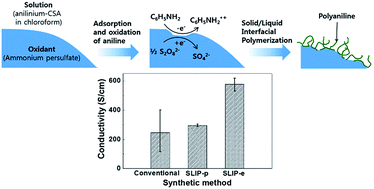Solid/liquid interfacial synthesis of high conductivity polyaniline†
Abstract
A new method of solid/liquid interfacial polymerization of aniline in non-aqueous solutions reproducibly provides polyanilines with a higher molecular weight, lower degree of ortho-substitution, and higher degree of crystallinity, exhibiting higher electrical conductivity than the conventional aqueous method.



 Please wait while we load your content...
Please wait while we load your content...